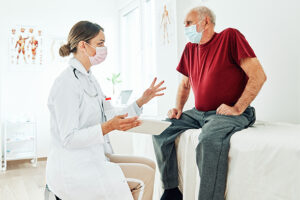Infectious Diseases
Influenza
Changes in Vaccine Recommendations: Review and Updates
Overview
In an on-demand session titled “Vaccine Update: What’s New? What’s Changed?” from the 2020 AAP Virtual National Conference & Exhibition, Kenneth Hempstead, MD, FAAP, reviewed updates from the Centers for Disease Control and Prevention’s Advisory Committee on Immunization Practices. The importance of influenza vaccination during the ongoing COVID-19 pandemic was noted.
Following the presentation, our featured expert, Tina Q. Tan, MD, FAAP, FIDSA, FPIDS, was interviewed by Conference Reporter Editor-in-Chief Tom Iarocci, MD. Dr Tan’s clinical perspectives on this session are presented here.
Tina Q. Tan, MD, FAAP, FIDSA, FPIDS
|
|
“I share the concerns raised in this session regarding this coming winter’s respiratory season, and I was glad to hear that additional influenza vaccine doses are being produced this year, with some increase in LAIV production over last year.”
A major takeaway from this session was the importance of influenza vaccination, given that we are in the middle of the COVID-19 pandemic. There are many symptoms of influenza that overlap with COVID-19, and we want to do all that we can to make sure that people do not get influenza and COVID-19, or present to a medical facility where health care personnel have to try to distinguish between influenza and COVID-19. So, I share the concerns raised in this session regarding this coming winter’s respiratory season, and I was glad to hear that additional influenza vaccine doses are being produced this year, with some increase in live attenuated influenza vaccine (LAIV) production over last year.
For the 2020-2021 season, the Advisory Committee on Immunization Practices noted changes to the influenza vaccine composition, with updates to 3 of the 4 strains in both egg-based and cell- or recombinant-based vaccines. The egg-based and cell/recombinant-based vaccines also differ from each other in some of the included strains for the influenza A viruses H1N1 and H3N2, a difference that might reflect aspects of the manufacturing process. The guidance also became more concrete as to who should receive the LAIV and for whom the vaccine is either contraindicated or for whom there are precautions to be noted. Once again, there is no preferential recommendation for one influenza vaccine product over another in persons for whom more than one licensed, recommended, and appropriate product is available (eg, there is no preference between the inactivated influenza vaccine and the LAIV).
In my practice setting, more patients seem to be willing to receive the influenza vaccine this year than in the past; however, there are still many individuals who are adamantly against being vaccinated, no matter how you frame the discussion. This is unfortunate because the vaccination rate definitely plays a major role in who is going to be protected and who is not. When you look at the number of pediatric deaths each year, the vast majority occur in children who were not vaccinated.
One of the consequences of COVID-19 has been a dramatic decrease in the rates of routine childhood immunizations. Early on, many clinics and medical offices completely closed, so many people were unable to get their immunizations. Now, we have a better understanding of the types of mitigation protocols that need to be in place for someone to go into a medical setting. It may take a bit longer with social distancing, and the clinic flow may be different, but vaccination for seasonal influenza is no less important during COVID-19.
At the end of the session, the discussion turned to COVID-19 vaccines. There are more than 100 potential vaccine candidates, although a much smaller number are currently in clinical trials. A few promising candidates that are in phase 3 trials were noted, including 2 mRNA vaccines and a more traditional viral vaccine using an attenuated adenovirus. We all hope that we will have a SARS-CoV-2 vaccine soon so that things can begin to get better, but there are still many important unanswered questions. For instance, we still do not know much about the extent to which COVID-19 infection provides immunity and for how long, nor do we know how long vaccines would provide immunity or what the best lab correlate of immunity might be. And, as of now, these clinical trials of COVID-19 vaccines are all being done in adults.
References
Centers for Disease Control and Prevention. Frequently asked influenza (flu) questions: 2020-2021 season. Accessed October 4, 2020. https://www.cdc.gov/flu/season/faq-flu-season-2020-2021.htm
Centers for Disease Control and Prevention. Schedule changes & guidance. Accessed October 4, 2020. https://www.cdc.bov/vaccines/schedules/hcp/schedule-changes.html
Centers for Disease Control and Prevention. Summary: 'prevention and control of seasonal influenza with vaccines: recommendations of the Advisory Committee on Immunization Practices (ACIP)—United States, 2020-21'. Accessed October 4, 2020. https://www.cdc.gov/flu/professionals/acip/summary/summary-recommendations.htm
De Luca CD, Esposito E, Cristiani L, et al. COVID-19 in children: a brief overview after three months experience. Paediatr Respir Rev. 2020;35:9-14. doi:10.1016/j.prrv.2020.05.006
Grohskopf LA, Alyanak E, Broder KR, et al. Prevention and control of seasonal influenza with vaccines: recommendations of the Advisory Committee on Immunization Practices — United States, 2020–21 influenza season. MMWR Recomm Rep. 2020;69(8):1-24. doi:10.15585/mmwr.rr6908a1
Hempstead K. Vaccine update: what’s new? What’s changed? On-demand session presented at: 2020 American Academy of Pediatrics Virtual National Conference & Exhibition; October 2-5, 2020.
O’Leary ST, Maldonado YA, Kimberlin DW. Update from the Advisory Committee on Immunization Practices. J Pediatric Infect Dis Soc. 2020;9(1):3-5. doi:10.1093/jpids/piaa008
This information is brought to you by Engage Health Media and is not sponsored by, nor a part of, the American Academy of Pediatrics.











